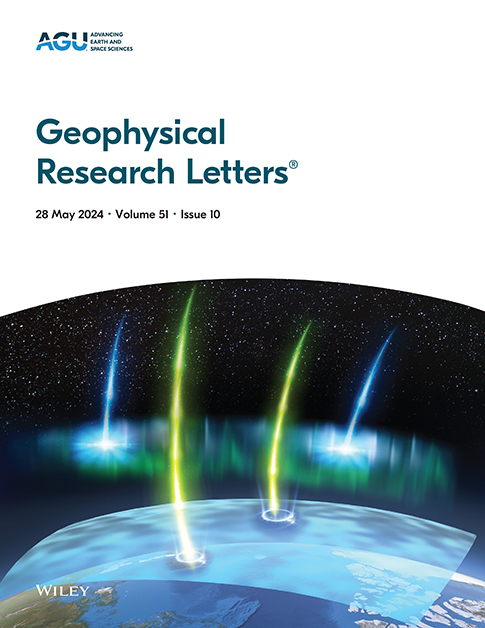气溶胶通过微物理过程塑造东南亚对流超调的垂直结构
IF 4.6
1区 地球科学
Q1 GEOSCIENCES, MULTIDISCIPLINARY
引用次数: 0
摘要
对流超调显著影响大气物质和能量循环,并可能造成严重的社会影响;然而,气溶胶对其微物理结构和相关极端天气的影响仍不清楚。本文利用一种更精确的对流超调检测算法和10年的高分辨率数据,研究了气溶胶如何影响对流超调,重点研究了其长期模式、降水的三维微物理结构(如粒径和浓度)以及与极端天气的关系。结果表明:海洋大陆对流超调的发生频率和强度均有所增加,且有明显的增加趋势;在水汽充足季节,气溶胶对对流超调的影响较强,污染条件下雨滴较大但较少,雨滴直径增加1.2 ~ 1.76倍,雨滴浓度下降20%。此外,气溶胶对降雨率和闪电的对流超调影响分别增加了20%和50%,使空间影响面积增加了近一倍。本文章由计算机程序翻译,如有差异,请以英文原文为准。
Aerosols Shape the Vertical Structure of Convective Overshooting in Southeast Asia Through Microphysical Processes
Convective overshooting significantly influences atmospheric material and energy cycles and can cause severe social impacts; nevertheless, aerosol effects on its microphysical structure and associated extreme weather remain unclear. Using a more accurate algorithm of detecting convective overshooting and 10 years of high‐resolution data, this paper investigated how aerosols affect convective overshooting, focusing on its long‐term patterns, three‐dimensional microphysical structure of precipitation such as particle size and concentration, as well as the relationship with extreme weather. Results show that convective overshooting occurred more frequently and intensely in the Maritime Continent, exhibiting a significant increasing trend. Aerosols exerted a stronger influence on convective overshooting during water vapor sufficient seasons, and polluted conditions produced larger but sparser raindrops, with raindrop diameters increasing by 1.2–1.76 times while concentration decreased by 20%. Moreover, aerosols enhanced convective overshooting impact on rain rates and lightning by 20% and 50%, respectively, nearly doubling the spatial influence area.
求助全文
通过发布文献求助,成功后即可免费获取论文全文。
去求助
来源期刊

Geophysical Research Letters
地学-地球科学综合
CiteScore
9.00
自引率
9.60%
发文量
1588
审稿时长
2.2 months
期刊介绍:
Geophysical Research Letters (GRL) publishes high-impact, innovative, and timely research on major scientific advances in all the major geoscience disciplines. Papers are communications-length articles and should have broad and immediate implications in their discipline or across the geosciences. GRLmaintains the fastest turn-around of all high-impact publications in the geosciences and works closely with authors to ensure broad visibility of top papers.
 求助内容:
求助内容: 应助结果提醒方式:
应助结果提醒方式:


